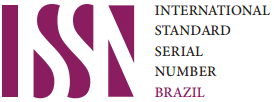Inhibidores intravenosos de la monoaminooxidasa y la ketamina: ¿una asociación segura?
DOI:
https://doi.org/10.25118/2763-9037.2022.v12.219Palabras clave:
seguridad, inhibidores de la monoaminooxidasa, ketamina, presión arterialResumen
Introducción: La ketamina está surgiendo como un fármaco rápido y eficaz en el tratamiento de la Depresión Resistente al Tratamiento (DRT) y es el primer fármaco con un mecanismo de acción fuera del sistema monoaminérgico aprobado para este fin. Los pacientes con DRT suelen tomar o tener indicación de tomar inhibidores de la monoaminooxidasa (IMAOs). La ketamina tiene efectos simpaticomiméticos a través, entre otros mecanismos, de la inhibición de la recaptación de noradrenalina; ya se han establecido los riesgos del uso concomitante de IMAO y algunos fármacos noradrenérgicos. En vista de ello, la posibilidad de que se produzcan crisis hipertensivas como consecuencia de la combinación de estos fármacos requiere atención clínica. Objetivo: El objetivo de esta revisión fue verificar aspectos importantes sobre esta combinación, centrándose en la aparición de crisis hipertensivas y otros efectos cardiovasculares. Método: El estudio se realizó utilizando las bases de datos Pubmed, Scielo y Lilacs con fecha de 1990 hasta marzo de 2021, utilizando la combinación de descriptores: (Monoamine oxidase inhibitor) AND (Ketamine). Los resultados muestran la seguridad y eficacia de la combinación, con elevaciones transitorias de la frecuencia cardíaca y la presión arterial, sin consecuencias para los pacientes. Conclusión: Sin embargo, se trata de datos procedentes de informes y series de casos y de una pequeña cohorte retrospectiva. Por lo tanto, es posible que no se detecten efectos secundarios graves en estas muestras porque son pequeñas.
Descargas
Métricas
Citas
Lacerda AL, Del Porto JA. Uso da cetamina no tratamento de transtornos psiquiátricos e dor crônica: teoria e prática. São Paulo: Editora dos editores; 2020.
Zhou YL, Liu WJ, Wang CY, Zheng W, Lan XF, Weng SY, Ning YP. Cardiovascular effects of repeated subanaesthetic ketamine infusion in depression. Journal of Psychopharmacology. 2021;35(2):159-167 https://doi.org/10.1177/0269881120936909
Liebe T, Shijia Li, Lord A, Colic L, Krause AL, Batra A, Kretzschmar MA, Sweeney-Reed CM, Behnisch G, Schott BH, Walter M. Factors influencing the cardiovascular response to subanesthetic ketamine: a randomized, placebo-controlled trial. International Journal of Neuropsychopharmacology. 2017;20(11):909–918 https://doi.org/10.1093/ijnp/pyx055
Veraart JKE, Smith-Apeldoorn SY, Bakker IM, Visser BAE, Kamphuis J, Schoevers RA, Touw DJ. Pharmacodynamic interactions between ketamine and psychiatric medications used in the treatment of depression: a systematic review. International Journal of Neuropsychopharmacol. 2021 Oct 23;24(10):808-831. https://doi.org/10.1093/ijnp/pyab039 - PMid:34170315 - PMCid:PMC8538895
Muntner N, Stahl SM. Stahl's essential psychopharmacology: neuroscientific basis and practical applications. Cambridge: Cambridge University Press; 2013. 620 p.
McIntyre RS, Rosenblat JD, Nemeroff CB, Sanacora G, Murrough JW, Berk M, Brietzke E, Dodd S, Gorwood P, Ho R, Iosifescu DV, Lopez Jaramillo C, Kasper S, Kratiuk K, Lee JG, Lee Y, Lui LMW, Mansur RB, Papakostas GI, Subramaniapillai M, Thase M, Vieta E, Young AH, Zarate Jr. CA, Stahl S. Synthesizing the evidence for Ketamine and esketamine in treatment-resistant depression: an international expert opinion on the available evidence and implementation. American Journal of Psychiatry. 2021;178(5):383-99. https://doi.org/10.1176/appi.ajp.2020.20081251 PMid:33726522
Gaynes BN, Lux L, Gartlehner G, Asher G, Forman‐Hoffman V, Green J, Boland E, Weber RP, Randolph C, Bann C, Coker‐Schwimmer E, Viswanathan M, Lohr KN. Defining treatment‐resistant depression. Depression and Anxiety. 2019;37(2):134-45. https://doi.org/10.1002/da.22968 PMid:31638723
Murphy JA, Sarris J, Byrne GJ. A review of the conceptualisation and risk factors associated with treatment-resistant depression. Depression Research and Treatment. 2017:1-10. https://doi.org/10.1155/2017/4176825 - PMid:28840042 - PMCid:PMC5559917
Rush AJ, Trivedi MH, Wisniewski SR, Nierenberg AA, Stewart JW, Warden D, Niederehe G, Thase ME, Lavori PW, Lebowitz BD, McGrath PJ, Rosenbaum JF, Sackeim HA, Kupfer DJ, Luther J, Fava M. Acute and longer-term outcomes in depressed outpatients requiring one or several treatment steps: a STAR*D report. American Journal of Psychiatry. 2006;163(11):1905-17. https://doi.org/10.1176/ajp.2006.163.11.1905 PMid:17074942
Sanacora G, Frye MA, McDonald W, Mathew SJ, Turner MS, Schatzberg AF, Summergrad P, Nemeroff CB. A consensus statement on the use of ketamine in the treatment of Mood disorders. JAMA Psychiatry. 2017;74(4):399. https://doi.org/10.1001/jamapsychiatry.2017.0080 PMid:28249076
Wilkinson ST, Katz RB, Toprak M, Webler R, Ostroff RB, Sanacora G. Acute and longer-term outcomes using ketamine as a clinical treatment at the Yale Psychiatric Hospital. The Journal of Clinical Psychiatry. 2018;79(4). https://doi.org/10.4088/jcp.17m11731 - PMid:30063304 PMCid:PMC6296748
Wilkinson ST, Toprak M, Turner MS, Levine SP, Katz RB, Sanacora G. A survey of the clinical, off-label use of ketamine as a treatment for psychiatric disorders. American Journal of Psychiatry. 2017;174(7):695-696. https://doi.org/10.1176/appi.ajp.2017.17020239 - PMid:28669202 PMCid:PMC5549850
Giakoumatos CI, Osser D. The Psychopharmacology Algorithm Project at the Harvard South Shore Program. Harvard Review of Psychiatry. 2019;27(1):33-52. https://doi.org/10.1097/hrp.0000000000000197 PMid:30614886
Veraart JKE, Smith-Apeldoorn SY, Spaans HP, Kamphuis J, Schoevers RA. Is ketamine an appropriate alternative to ECT for patients with treatment resistant depression? A systematic review. J Affect Disord. 2021;281:82-89. https://doi.org/10.1016/j.jad.2020.11.123 PMid:33307338
McIntyre RS, Carvalho IP, Lui LM, Majeed A, Masand PS, Gill H, Rodrigues NB, Lipsitz O, Coles AC, Yena L, Tamura JK, Iacobucci M, Lee P, Nasri F, Singhal N, Wong ER, Subramaniapillai M, Mansur R, Ho R, Lam RW, Rosenblat JD. The effect of intravenous, intranasal, and oral ketamine in Mood disorders: a meta-analysis. Journal of Affective Disorders. 2020;276:576-84. https://doi.org/10.1016/j.jad.2020.06.050 PMid:32871689
Wilkinson ST, Ballard ED, Bloch MH, Mathew SJ, Murrough JW, Feder A, Sos P, Wang G, Zarate CA, Sanacora G. The effect of a single dose of intravenous ketamine on suicidal ideation: a systematic review and individual participant data meta-analysis. American Journal of Psychiatry. 2018;175(2):150-8. https://doi.org/10.1176/appi.ajp.2017.17040472 PMid:28969441 PMCid:PMC5794524
Papakostas GI, Salloum NC, Hock RS, Jha MK, Murrough JW, Mathew SJ, Iosifescu DV, Fava M. Efficacy of eketamine augmentation in major depressive disorder. The Journal of Clinical Psychiatry. 2020;81(4). https://doi.org/10.4088/jcp.19r12889
Culpepper L. Reducing the burden of difficult-to-treat major depressive disorder: revisiting monoamine oxidase inhibitor therapy. Prim Care Companion CNS Disord. 2013;81. https://doi.org/10.4088/PCC.13r01515
Hopia H, Latvala E, Liimatainen L. Reviewing the methodology of an integrative review. Scandinavian Journal of Caring Sciences. 2016;30(4):662-9. https://doi.org/10.1111/scs.12327 - PMid:27074869
Whittemore R, Knafl K. The integrative review: updated methodology. Journal of Advanced Nursing. 2005;52(5):546-53. https://doi.org/10.1111/j.1365-2648.2005.03621.x - PMid:16268861
Katz RB, Toprak M, Wilkinson ST, Sanacora G, Ostroff R. Concurrent use of ketamine and monoamine oxidase inhibitors in the treatment of depression: a letter to the editor. General Hospital Psychiatry. 2018;54:62-4. https://doi.org/10.1016/j.genhosppsych.2018.05.007 PMid:30100209 - PMCid:PMC6292194
Dunner DL. Safety and efficacy of esketamine nasal spray in a depressed patient who was being treated with tranylcypromine: a case report. Neurology Psychiatry and Brain Research. 2020; 36:30-31. https://doi.org/10.1016/j.npbr.2020.02.008
Doyle DJ. Ketamine induction and monoamine oxidase inhibitors. Journal of Clinical Anesthesia. 1990;2(5):324-5. Disponível em: https://doi.org/10.1016/0952-8180(90)90078-h
Bartova L, Vogl SE, Stamenkovic M, Praschak-Rieder N, Naderi-Heiden A, Kasper S, Willeit M. Combination of intravenous S-ketamine and oral tranylcypromine in treatment-resistant depression: a report of two cases. European Neuropsychopharmacology. 2015;25(11):2183-4. https://doi.org/10.1016/j.euroneuro.2015.07.021 - PMid:26302763
Wang JC, Swainson J. The concurrent treatment with intravenous ketamine and an irreversible monoamine oxidase inhibitor for Treatment-Resistant Depression without hypertensive crises. Journal of Clinical Psychopharmacology. 2020;40(5):515-7. https://doi.org/10.1097/JCP.0000000000001244 - PMid:32740556
Bottemanne H, Bonnard E, Claret A, Petit AC, Gaillard R, Fossati P. Ketamine and monoamine oxidase inhibitor combination. Journal of Clinical Psychopharmacology. 2020;40(6):636-8. https://doi.org/10.1097/JCP.0000000000001281 - PMid:33009225
Lu BY, Agapoff JR, Olson DJ, Williams SR, Roller A, Goebert D. Rapid and sustained improvement in treatment-refractory depression through use of acute intravenous ketamine and concurrent transdermal selegiline: a case series. Journal of Affective Disorders. 2020; 262:40-42. https://doi.org/10.1016/j.jad.2019.10.050
Ludwig VM, Sauer C, Young AH, Rucker J, Bauer M, Findeis H, Ritter P. Cardiovascular effects of combining subcutaneous or intravenous esketamine and the MAO inhibitor tranylcypromine for the treatment of depression: a retrospective cohort study. CNS Drugs. 2021; 35:881-892. https://doi.org/10.1007/s40263-021-00837-6
Riva-Posse P, Reiff CM, Edwards JA, Job GP, Galendez GC, Garlow SJ, Saah TC, Dunlop BW, McDonald WM. Blood pressure safety of subanesthetic ketamine for depression: a report on 684 infusions. Journal of Affective Disorders. 2018;236,291–297. https://doi.org/10.1016/j.jad.2018.02.025
van Haelst IMM, van Klei WA, Doodeman HJ, Kalkman CJ, Egberts TCG, MAOI Study Group. Antidepressive treatment with monoamine oxidase inhibitors and the occurrence of intraoperative hemodynamic events: a retrospective observational cohort study. The Journal of Clinical Psychiatry. 2012;73(8):1103-1109. https://doi.org/10.4088/jcp.11m07607 - PMID: 22938842

Descargas
Publicado
Cómo citar
Número
Sección
Licencia
Derechos de autor 2022 Juliana Machado Leal dos Santos, Hugo Leonardo de Oliveira Couto, Dennison Carreiro Monteiro

Esta obra está bajo una licencia internacional Creative Commons Atribución-NoComercial 4.0.
Debates em Psiquiatria permite que el (los) autor (es) mantenga(n) sus derechos de autor sin restricciones. Permite al (los) autor (es) conservar sus derechos de publicación sin restricciones. Los autores deben garantizar que el artículo es un trabajo original sin fabricación, fraude o plagio; no infringe ningún derecho de autor o derecho de propiedad de terceros. Los autores también deben garantizar que cada uno atendió a los requisitos de autoría conforme a la recomendación del ICMJE y entienden que, si el artículo o parte de él es fallido o fraudulento, cada autor comparte la responsabilidad.
Reconocimiento-NoComercial 4.0 internacional (CC BY-NC 4.0) - Debates em Psiquiatria es regida por la licencia CC-BY-NC
Usted es libre de:
- Compartir — copiar y redistribuir el material en cualquier medio o formato
- Adaptar — remezclar, transformar y crear a partir del material
El licenciador no puede revocar estas libertades mientras cumpla con los términos de la licencia. Bajo las condiciones siguientes:
- Reconocimiento — Debe reconocer adecuadamente la autoría, proporcionar un enlace a la licencia e indicar si se han realizado cambios<. Puede hacerlo de cualquier manera razonable, pero no de una manera que sugiera que tiene el apoyo del licenciador o lo recibe por el uso que hace.
- NoComercial — No puede utilizar el material para una finalidad comercial.
No hay restricciones adicionales — No puede aplicar términos legales o medidas tecnológicas que legalmente restrinjan realizar aquello que la licencia permite.





























